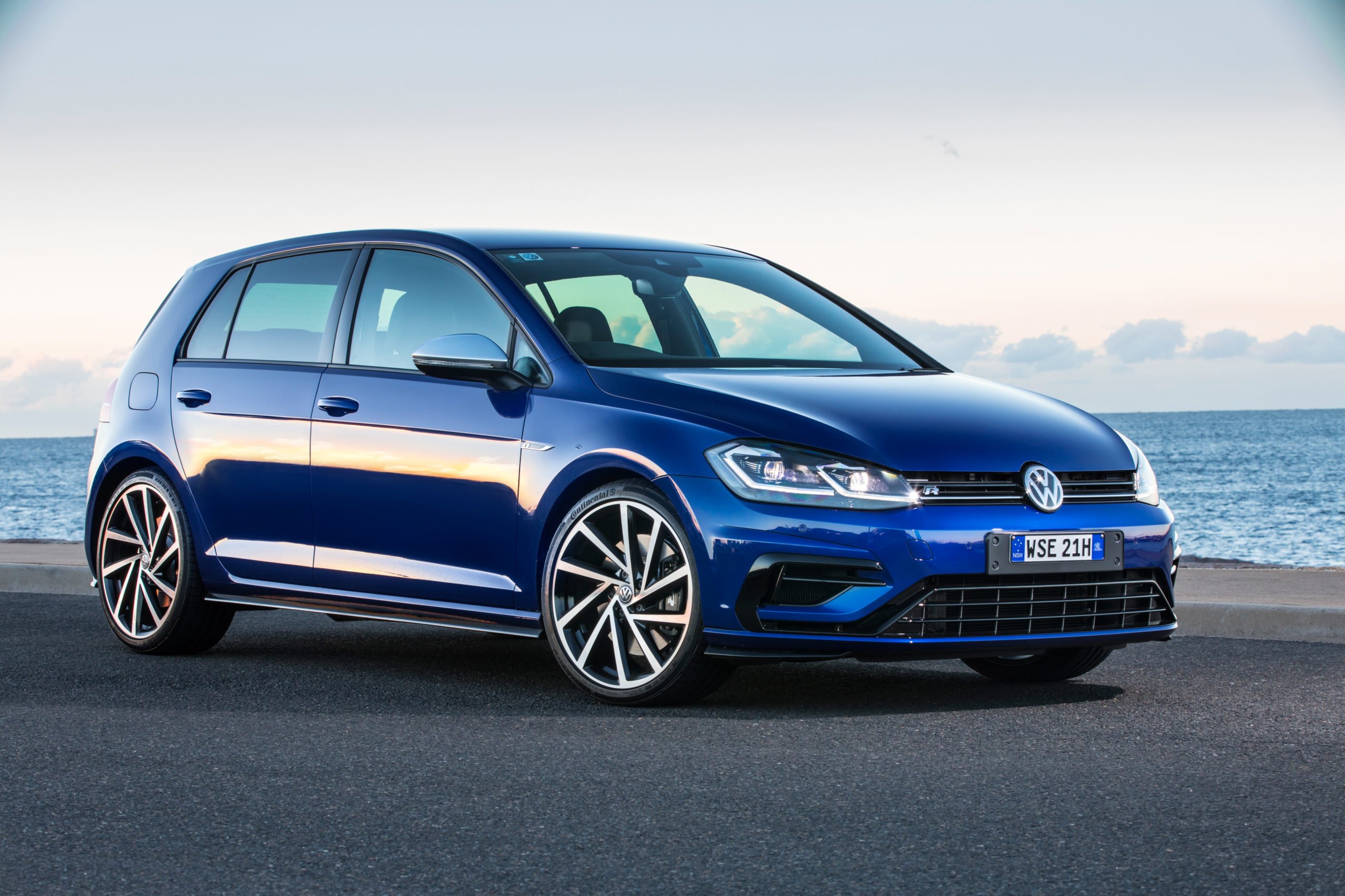
What is it?
We’ve spent the better part of three months living with a Volkswagen Golf R, and while the restrictions around the coronavirus meant we didn’t get to drive it as much as we would have liked, we were still able to get plenty of time to assess the merits of this premium German hot hatch.
But, sadly, all good things must come to an end and our Golf R was returned to Volkswagen. So time to reflect on the lessons learnt.
CLICK HERE to read Part 1 of our Long-term Review
Why we drove it
The primary goal of having the Golf R for an extended period was to see how it performed in its role as both a performance car – sitting atop the Golf Performance range – as well as its practical role as a hatchback.
Hot hatches are an ideal performance car for many of us, as they fulfil our demands for speed and power but can still be driven everyday – because only a fortunate few of us can afford to have specific ‘weekday’ and ‘weekend’ cars that perform the two roles of a hot hatch separately.
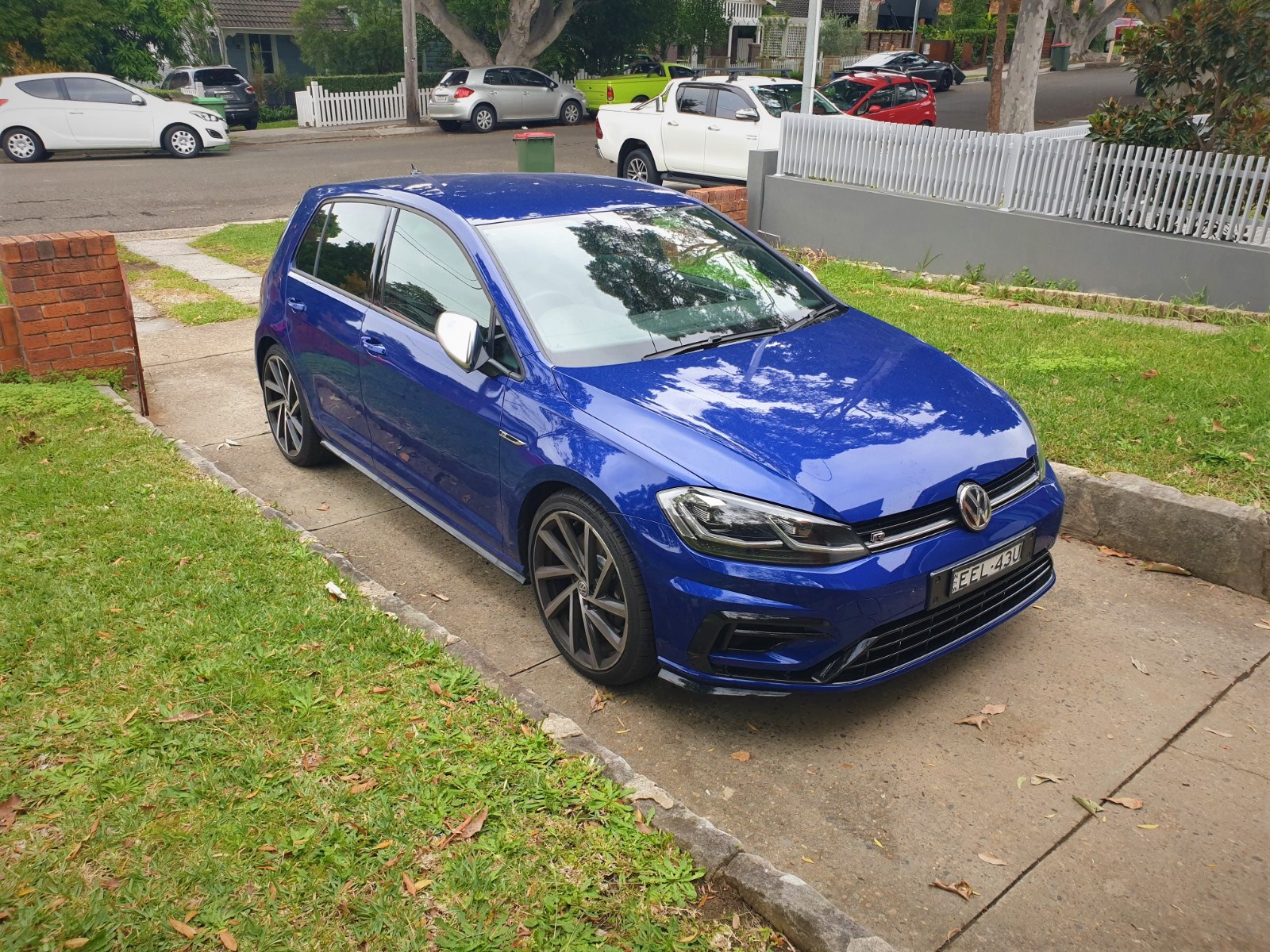
What did we like?
The Golf R Mk7.5 is a particularly good example of the hot hatch concept because it’s a step above most of the field. It offers slightly more performance, a more premium cabin and a higher starting price over the more popular models – such as the Golf GTI, Hyundai i30 N and Ford Focus ST. But it blurs the line between those and the more expensive, out-right premium hot hatches like the Audi S3 (which it shares its underpinnings with Golf R), BMW M135i and Mini Cooper JCW.
Naturally the key to any truly great hot hatch is the ‘hot’ part and the Golf R delivers in that department. Under the bonnet is a 2.0-litre four-cylinder turbocharged petrol engine that produces 213kW of power and 380Nm of torque. That isn’t as exceptional as when the car first arrived in 2015 thanks to the rapid rate of change in the automotive game (the i30 N boasts 202kW and Focus ST 206kW, for context) but it’s still strong and provides meaningful punch.
It’s paired to a seven-speed dual-clutch transmission and all-wheel drive system, which is the real key differentiator between the front-wheel drive GTI, N and ST. It’s a part-time system, only engaging the rear end when the conditions demand, but it does mean it feels more stable and never struggles for traction – as the front-drive-only competition can.
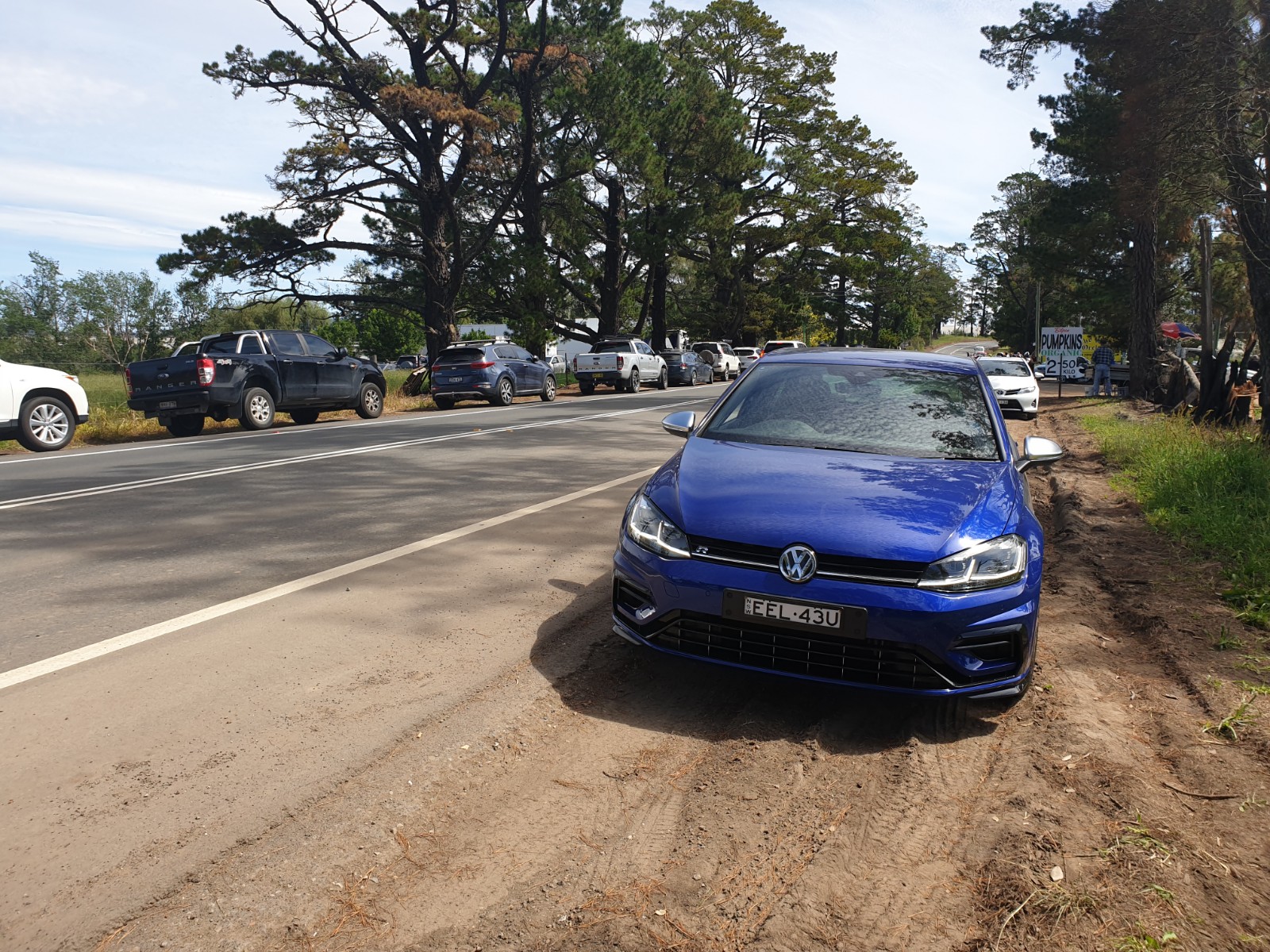
Another highly likeable element of the Golf R powertrain is the Drive Mode system, that allows you to adjust the response of the engine, transmission and stiffness of the adaptive dampers to best suit the conditions. The modes are Normal, Race, Comfort, Eco and Individual, and importantly after months of evaluation, we can confirm there are distinct differences between every setting. It isn’t like the old days when the difference between ‘Normal’ and ‘Race’ was ‘stiff and ‘stiffer’, with modern dampers and electric steering Volkswagen has been able to tune very different characteristics into the Golf R.
Which brings me to the other aspect of the Golf R we liked – the ‘hatch’ part of a hot hatch.
CLICK HERE to read the second installment of our Long-term Review
A hot hatch must capably perform the dual role of being fun to drive on a twisty road or track whilst also being liveable as a daily driver. In this aspect the Golf R excels, with its more premium focus and the notable difference in the way it drives when you dial in the ‘Normal’ and ‘Comfort’ settings.
While any car riding on 19-inch alloys with low-profile tyres will ride firmly, in Comfort setting the Golf R is compliant and does a commendable job of soaking up the imperfections in the road.
The same setting also tones down the powertrain and exhaust note, so you’re able to drive the Golf R as easily as you would an entry-level Golf. Unlike some hot hatches that make going to the shops feel like you’re in a race – which can be fun at times but ultimately becomes a chore – the Golf R is able to manage both aspects of the hot hatch with equal aplomb.
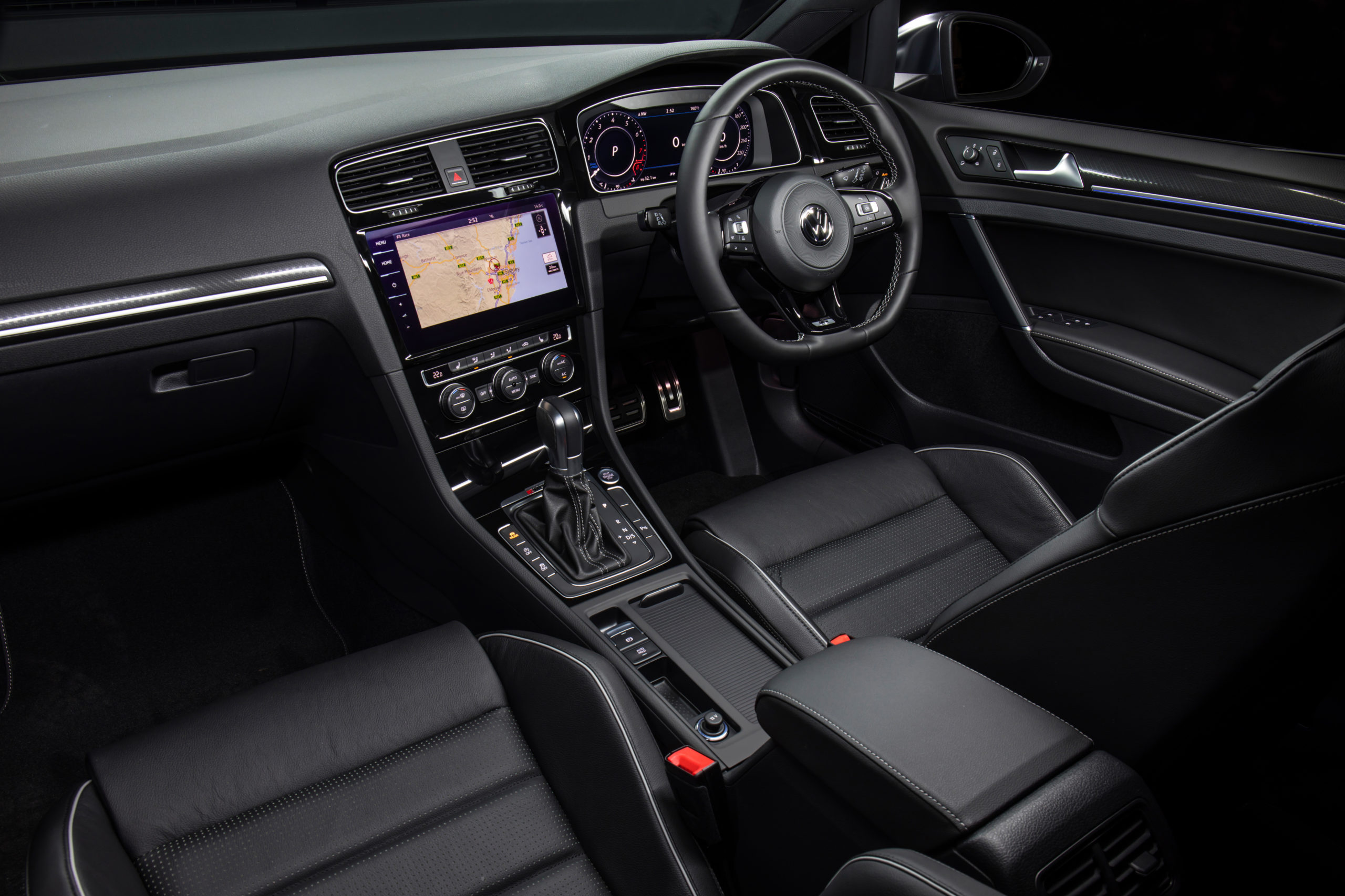
The other highlight of the Golf R is its design and presentation. Not only is it a smart and stylish small hatch outside, the unique R bodykit adding more muscle to the basic Golf Mk7.5 shape, but the cabin is on par with its luxury-badged rivals.
The Golf R interior is as good as any modern small car, with a clean, intuitive layout complimented by luxury and technology. For example, instead of traditional instrument dials, it uses Volkswagen’s ‘Active Info Display’ – a 12.3-inch digital panel that is customisable so you can alter the size of the virtual dials and expand the informational panel in the centre; for example, to get a larger navigation map.
The centre infotainment screen is also impressive, with its easy-to-use menus and clear graphics. It’s a big 10-inch display too, that adds to the impression of quality the R serves up.
The sports seats also impressed us during our time in the car. They not only look the part, finished in leather, but offer good support (especially laterally, ideal for dynamic cornering) but are also comfortable – so even long trips aren’t a hassle in the R.
What didn’t we like?
You do have to pay a premium to enjoy the benefits of the Golf R.
Now starting at $55,990 plus on-road costs (which is a $1000 price drop from July), the Golf R sits above the GTI ($47,190), i30 N ($41,400) and Focus ST ($44,890) but all three of those are front-wheel drive; and the Hyundai is currently manual-only.
Quite simply that will put it out of reach for many would-be hot hatch buyers that may not be able to make the financial stretch.
But apart from that significant question mark, there weren’t too many major criticisms we found with the Golf R. Of course it’s not a perfect car, but as hot hatches go it’s exceptionally good.
Some of the minor complaints we had include the relatively small boot, which does dent its image as a ‘practical hatchback’.

The other element we didn’t enjoy so much was the firmness of the ‘Race’ suspension. Unfortunately, thanks to COVID-19, we didn’t get to sample the Golf R on a racetrack as planned, because on Australia’s less-than-perfect roads the ride is simply too firm in the most dynamic setting. On pockmarked back roads that are the ideal playground for hot hatches, dial up Race mode for the full potential of the engine and the fastest shifts of the gearbox and the ride gets far too busy, which makes you feel like you’re skittering across the top of the surfaces rather than absorbing the bumps.
Fortunately there’s a solution – Individual. Using its ability to alter each individual aspect of the drive mode parameters (hence the name) you can choose ‘Race’ for the powertrain but leave the suspension in the more compliant ‘Normal’ or ‘Comfort’ settings for a superior ride.
There are other smaller issues – the placement of the USB plug, the way fingerprints mark the infotainment screen and others – but it’s really just nit-picking what is overall a very impressive package.
CLICK HERE to read Part 3 of our Long-term Review
Final verdict
Perhaps the biggest question I had during our time with the Golf R was does it really capture the heart as well as the head. On paper the specifications are excellent, it’s comfortable and stylish and well equipped – but hot hatches are made to be driven.
A great hot hatch should make you want to drive it. You should look at it in your driveway and think ‘I want to go for a drive to nowhere just to experience it’. To be honest it took me a while to warm to the Volkswagen.
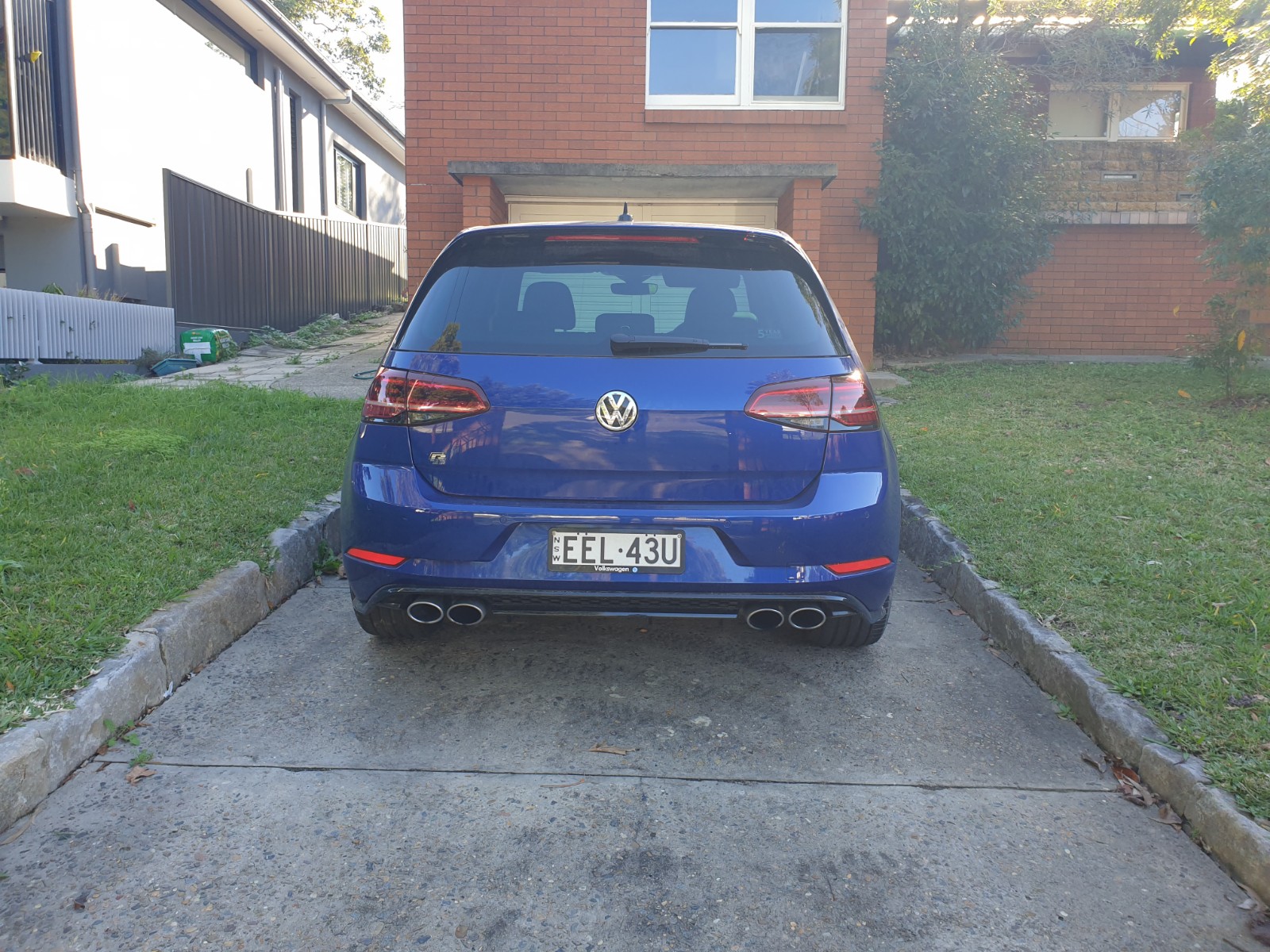
While it was always a pleasure to drive – whether it was running the kids to school or heading into the mountains on the weekend – it always performed admirably but initially left me a little cold. But after three months behind the wheel the knowledge that it had to be returned made me pause and reflect on how much I’d miss it.
Ultimately the Golf R is a car that speaks to the heart as well as the head. It’s performance is excellent – the engine powerful, the transmission on point and the all-wheel drive makes for composed manners. And it’s perhaps the fact that it’s so composed, so clinical in its execution that it can create the impression that it lacks heart and soul.
But when you really get to know the Golf R that character comes out and it emerges as a truly great hot hatch.
2020 Volkswagen Golf R price and specifications
| Price: | From $55,990 plus on-road costs |
| Engine: | 2.0-litre four-cylinder turbo petrol |
| Power: | 213kW at 5400-6500rpm |
| Torque: | 380Nm at 1850-5300rpm |
| Transmission: | Seven-speed dual-clutch automatic, all-wheel drive |
| Fuel use: | 7.2L/100km |
| Wheels: | 19-inch alloys |
| Tyres: | 235/35 front & rear |
| Length: | 4263mm |
| Width: | 1799mm |
| Height: | 1436mm |
| Weight: | 1450kg |
| 0-100km/h: | 4.8 sec (claimed) |













Discussion about this post